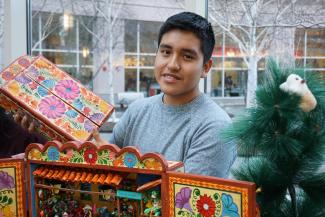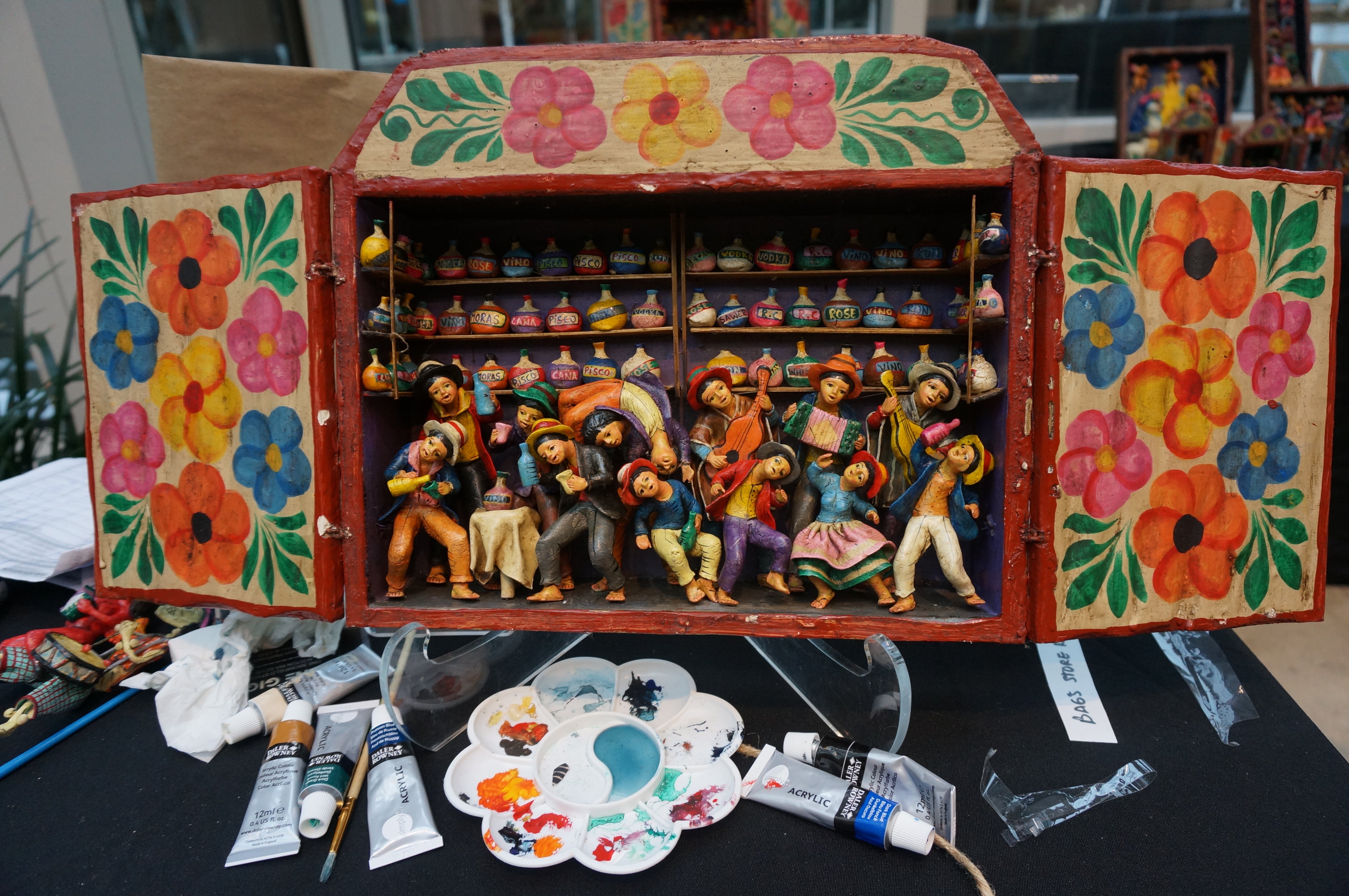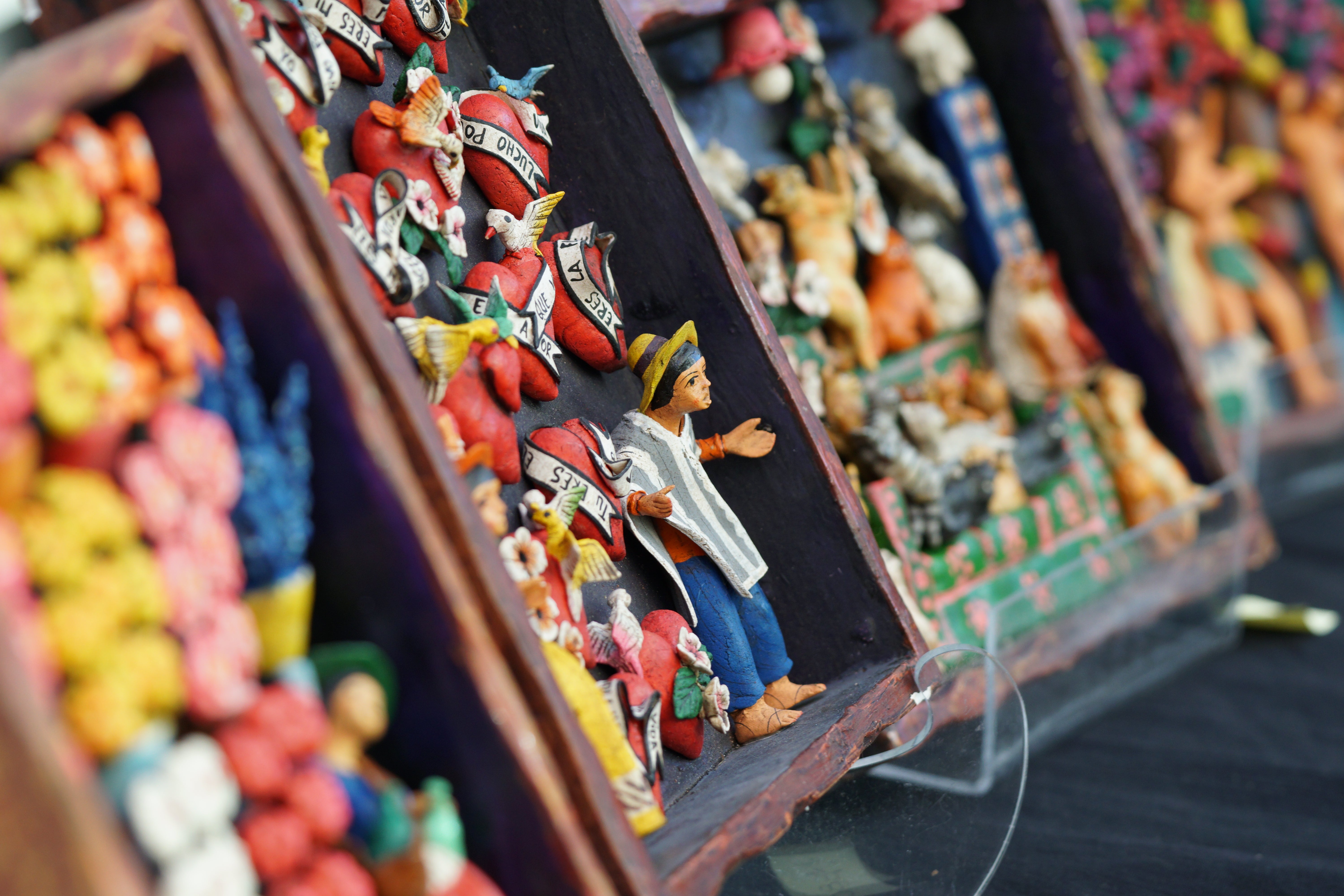
Sebastian Palomino Jimenez (Quechua) is 16 years old from Lima, Peru. He recently moved to Massachusetts with his family, with whom he sculpts, paints, and builds worlds in the form of retablos (altarpiece boxes). These expressive story scenes are sold as small, medium, and large pieces that carry on the family’s tradition.
Culturally, retablos represent the Andean worldview from the Hamapacha and Qapacha regions during the period between 1542–1824 when Indigenous Peoples’ lands were being conquered by the Spanish. Indigenous people adopted the artform brought by the Spanish conquistadors and used it to tell their own stories. For Palomino, retablos are also personal; they represent a childhood learning of sculpting from his mother.
The techniques for crafting retablos have changed since Palomino’s grandfather had to go to a mountain in Ahuacuche for omanga (a specific type of rock) to make the cast, and used bull skin, boiled all night, to make glue. Today the glue is purchased from the store, but the painting and figurines, now made of potato, are still done by hand, creating the structure for a wide array of artistic choices.

Today, Palomino, with his family, sculpts and polishes the wooden boxes, then paints the background and frames. Each piece of the retablo is made with dough prepared in the workshop combined with plaster. Later each figure is painted, and once they have dried, they are placed in the box with glue. The decorations that surround the figurines within the retablo are made from natural and recycled materials. The whole box is then painted with aging liquid that is prepared in their shop.
“Since I was little, I always followed my parents to the workshop...always playing, my mother patiently taught me,” Palomino Jimenez recalls. “I played with figurines and made sculptures, but they did not come out as well as I imagined. I loved when they painted the boxes of the retablos and the flowers, the combination of colors in them was so beautiful. Now, at 16, I make retablos and help my parents, Eleudora and Fidel, my grandmother Amalia, and my sisters, Zuly and Danika, in the workshop.”
On his participation as a teenager in the Cultural Survival Bazaars, Palomino says, “I have enjoyed meeting people from different cultures, making friends and learning about their customs. I love getting to know other places, visiting museums, libraries, and prestigious universities. Selling abroad has been a welcome challenge, and although at first it was hard to speak in English to sell our art, my family has been practicing together and we now understand more English. I feel connected to my culture through my art because the Ayacuchano retablo is Peru’s cultural heritage. It represents history and is part of our family legacy.”

He continues, “Being an artist feels good because I can express part of my culture in art. I see myself as an artist, but I also plan to have a professional career. My family has always taught me that you have to carry your values wherever you go and never forget where you come from; this is part of what influences the artist. For me, seeing the world as an artist is about expressing, telling, and shaping stories. You have to master the techniques first to then be able to visualize and express.
When I make a retablo, first I have to think about what the idea is, what I want to do, what I want to present, what I want to make understood. I look at myself as [an observer] who wants to show something, and I have to try to express the figure with each painting, with each color. I see the world as an active spectator who not only observes, but can also influence. I give movement to the sculptures: if it is a dance, all the people are dancing, and if it is the jungle, all the birds are flying. When I make art, I relate to my culture.”
All in-person Cultural Survival Bazaars in 2021 are postponed due to the COVID-19 pandemic. To support and buy directly from our Bazaar artists, visit our directory of artists at bazaar.cs.org.
